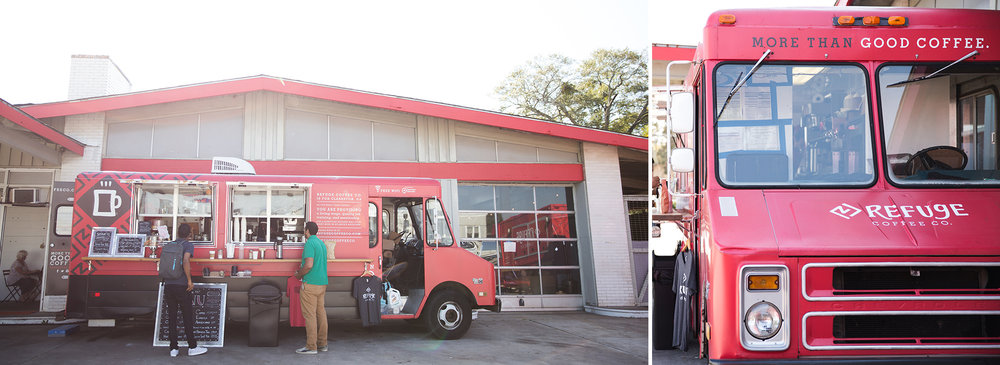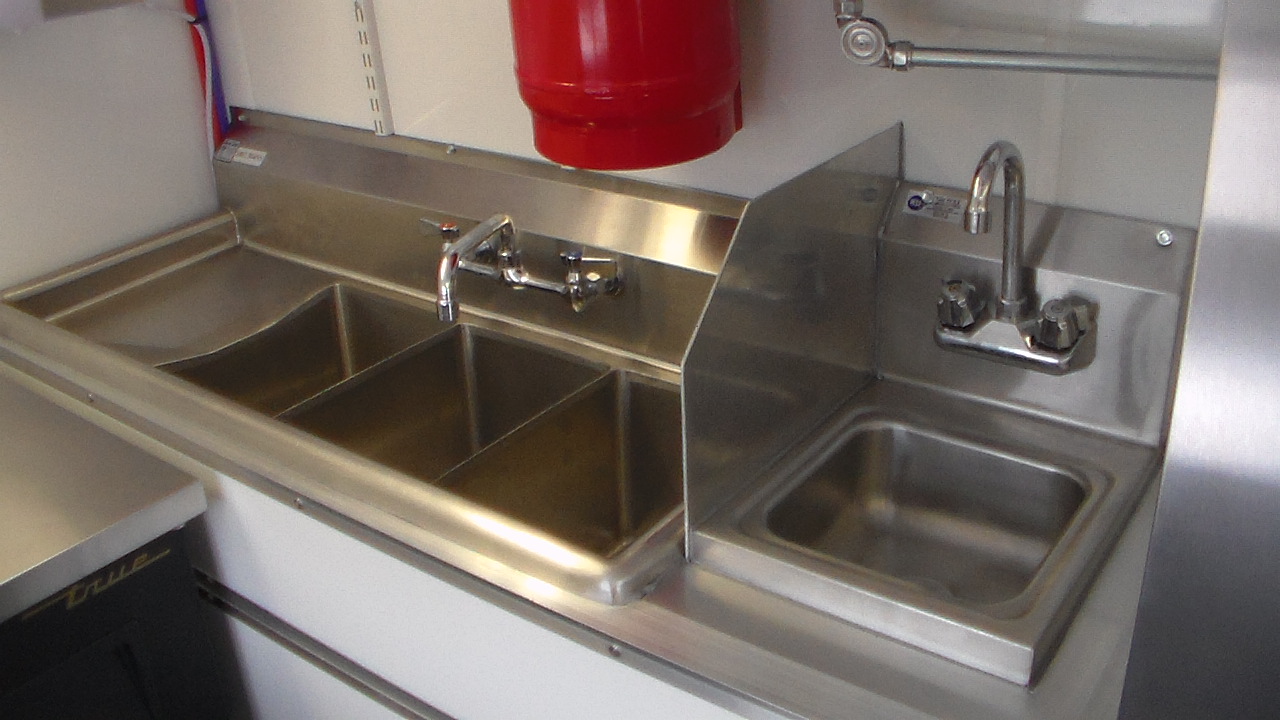When you’re preparing to get a new food truck build, it’s natural to invest time planning the kitchen layout or exterior wrap. Don’t get me wrong, these are critical aspects of the food truck build process. But there are less “exciting” aspects of the build process that are equally important, such as the electrical requirements and plumbing.
The plumbing of your food truck is a crucial part of the operations. Vendors will need a reliable water source for cooking as well as maintaining health standards. You’ll need hot and cold water on demand to wash dishes, spoons, or pans. You’ll also need a separate hand washing sink for employees and yourself.

Refuge Coffee Co. Truck built by M&R Specialty Trailers and Trucks.
Beyond being able to operate a truck and serve customers at a basic level, you’ll need to ensure the plumbing of your unit is setup correctly to pass a health inspection. Many cities have extremely specific requirements for the size and capacity of waste water tanks as an example. If you don’t get a truck built with the right specifications the first time, your anticipated startup cost can balloon quickly.
In today’s blog post, we examine nine specific plumbing considerations you should be aware before investing in a food truck or trailer. These are specific things we take into account before starting any build at M&R Specialty Trailers and Trucks. These insights come from over 15 years manufacturing custom built food trucks and concession trailers.

Food Truck Plumbing is a Critical Component in the Build Process.
Food Truck Plumbing Guidelines
Here are some best practices to keep in mind that relate to the plumbing system in a food truck.
- Most areas require 15% larger waste tank than fresh water tank to pass a health inspection. This ensures that you can dump more waste water than fresh water carried onboard. Make sure you understand your local areas laws around this requirement before investing in a vehicle. We always compile this information before starting on a custom build out.
- In most situations, it makes sense to install a water tank under the sink. Some builders install tanks on top of the truck. This is not advised because you could be dealing with long-term weather issues that can wear out the tank.
- Sink wells must be large enough to put any piece of cooking equipment into the well. After all if the sink well isn’t big enough, you won’t be able to effectively sanitize the equipment. This is a common requirement for health inspectors across the United States. We always confirm with our customer in advance the cooking equipment list they expect to use on the truck to ensure this won’t be a problem.
- We recommend installing two drain boards to help water drain into your sinks. This is a standard feature in our builds. Some city or county health departments actually require two drain boards.
- Drip boards should be installed above the sink to drip dry. These are frequently called rack boards or drip trays as well. The requirement for these is sporadic from county to county, but is a convenient piece to have installed into your unit regardless of the rules.
- Almost every city / county has the requirement of a 3-compartment sink with a separate hand-washing sink. In many areas, all compartments need to be the same size (with the exception of the hand washing sink).
- We do not recommend 12-bolt water pumps for food vendors. They can be a big hassle and are designed for RVs, not mobile kitchens. We recommend 110 pumps recommended so you don’t need to convert.
- We recommend the installation of propane water heaters because they will senses when heat falls below a certain temperature. In a food truck, you will need to have on-demand hot water that is at least 180 degrees Fahrenheit. This hot water test is one of the key aspects of passing a health inspection in many areas. Propane also doesn’t add more amps to generator, which is very important on a food truck. Heating water consumes around 12.5 amps typically for generator. With propane it won’t take your electric from your generator. If you’re interested in learning more about the basics on how water heaters work this is a helpful guide.
- Lockable water fills are recommended. You should be able to use a hose or bucket to fill your water tank. Make sure there is a lock in place so no one can tamper with water. This is an excellent safety precaution as well since the fresh water is much less likely to pop open, which can happen while commuting to vending locations.
By following the pointers in this post, you’ll avoid many of the plumbing pitfalls we’ve seen people make. If you’re thinking about a custom food truck or concession trailer build out, contact us to discuss your project. We welcome questions about the build process and look forward to serving you!
